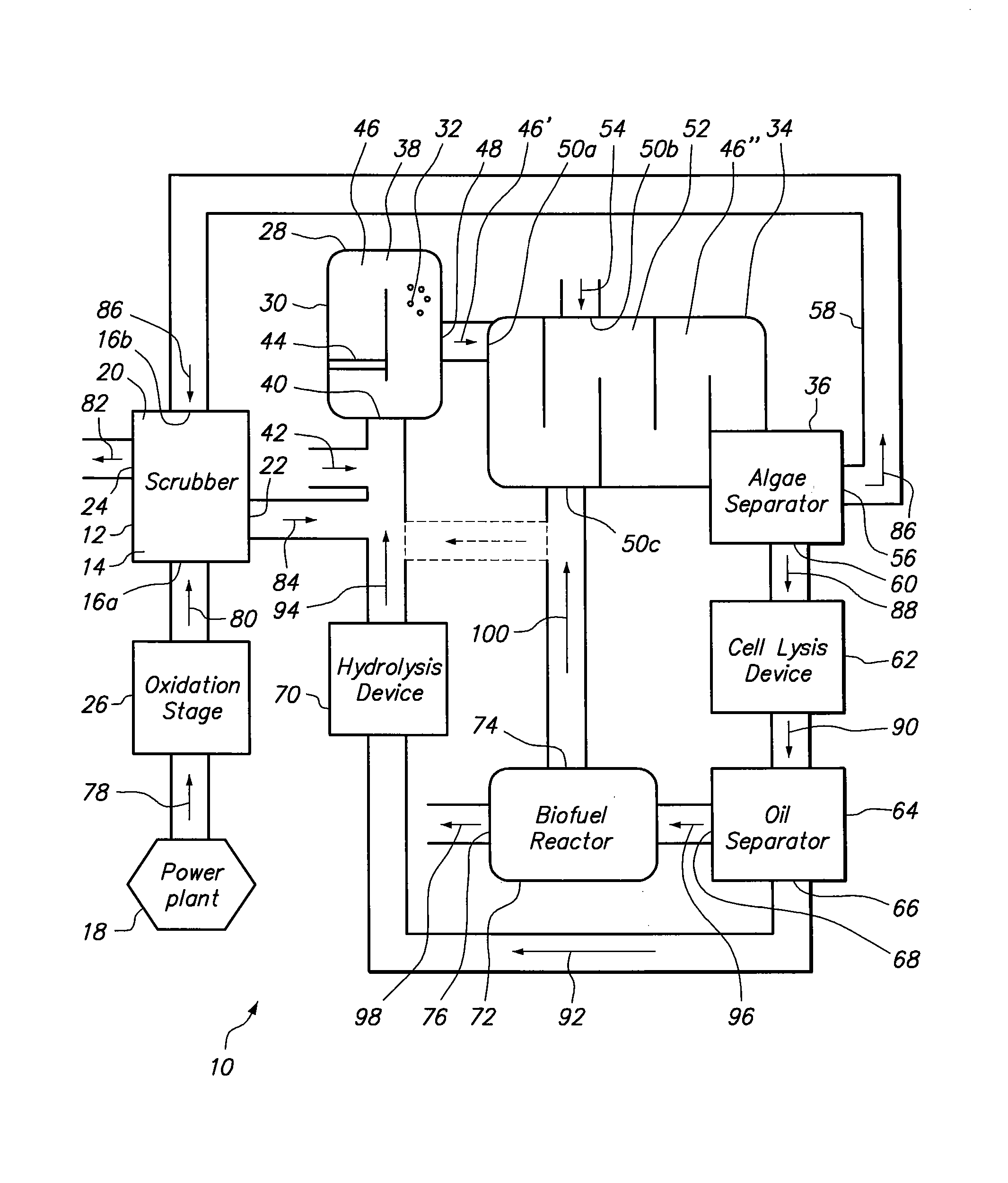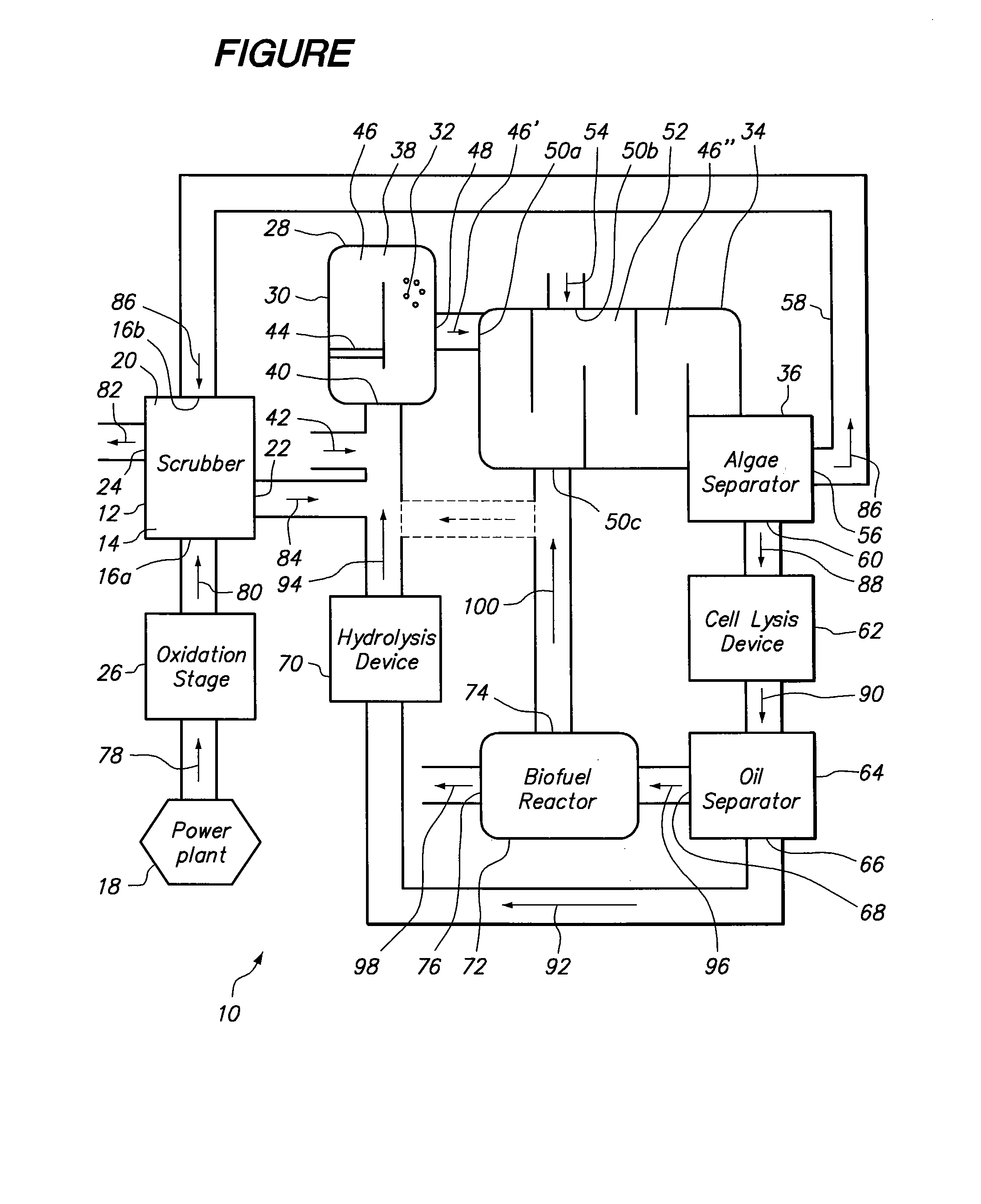Photosynthetic carbon dioxide sequestration and pollution abatement
a photosynthesis and carbon dioxide technology, applied in the field of photosynthesis carbon dioxide sequestration and pollution abatement, can solve the problems of high oil content of algae-derived biofuel, high cost of process involved in creating biofuel from plant oils, and rising concerns over shortages and costs associated with hydrocarbon product production, etc., to achieve the effect of high oil conten
- Summary
- Abstract
- Description
- Claims
- Application Information
AI Technical Summary
Benefits of technology
Problems solved by technology
Method used
Image
Examples
Embodiment Construction
[0013]Referring to the Figure, a system for producing biofuel from pollutant-fed algae in accordance with the present invention is shown and generally designated 10. As shown, the system 10 includes a scrubber 12 for scrubbing a pollutant-contaminated fluid stream. Specifically, the scrubber 12 includes a chamber 14 and an input port 16a for receiving flue gas from a combustion source such as a power plant 18 and a scrubber solution 20. Typically, the flue gas includes pollutants such as carbon dioxide, sulfur oxides, and / or nitrogen oxides. Also, the scrubber solution 20 typically comprises sodium hydroxide or sodium bicarbonate. As further shown, the scrubber 12 includes a solution outlet 22 and a gas outlet 24. Also, the system 10 includes an oxidation stage 26 for oxidizing pollutants in the flue gas to facilitate their removal from the flue gas. As shown, the oxidation stage 26 is interconnected between the power plant 18 and the scrubber 12.
[0014]As further shown, the system 1...
PUM
| Property | Measurement | Unit |
|---|---|---|
| Content | aaaaa | aaaaa |
| Solution | aaaaa | aaaaa |
| Velocity | aaaaa | aaaaa |
Abstract
Description
Claims
Application Information
 Login to View More
Login to View More - R&D
- Intellectual Property
- Life Sciences
- Materials
- Tech Scout
- Unparalleled Data Quality
- Higher Quality Content
- 60% Fewer Hallucinations
Browse by: Latest US Patents, China's latest patents, Technical Efficacy Thesaurus, Application Domain, Technology Topic, Popular Technical Reports.
© 2025 PatSnap. All rights reserved.Legal|Privacy policy|Modern Slavery Act Transparency Statement|Sitemap|About US| Contact US: help@patsnap.com


